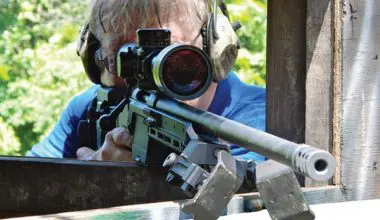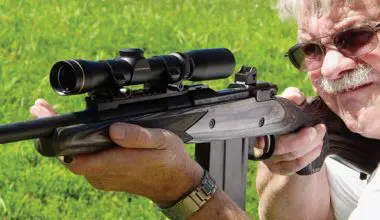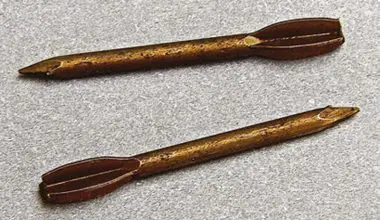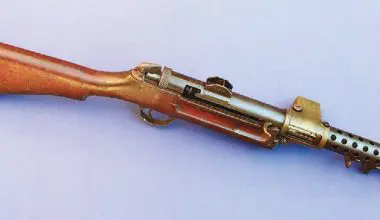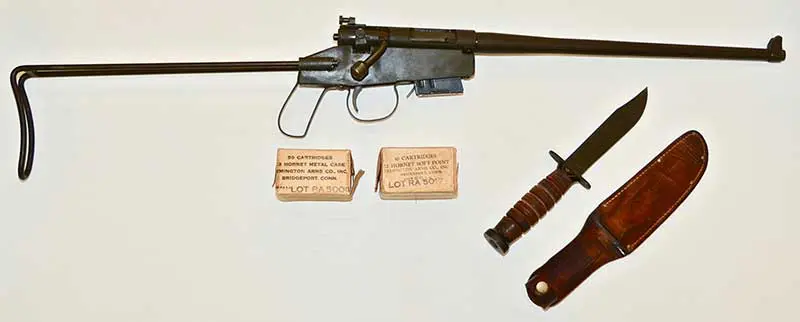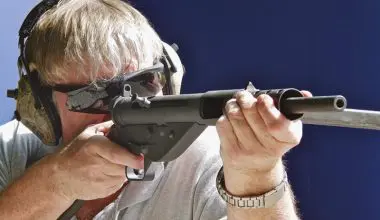THE bullpup concept for military rifles has been around a lot longer than most realize. In fact, even before World War I, there were experiments with what would become the bullpup.
The first one to attract much attention was the British EM-2, which was designed in the late 1940s for the .280 British Service Cartridge. But the EM-2 fell afoul of the politics surrounding the adoption of the M14 rifle and the 7.62x51mm cartridge by the United States and never went into production.
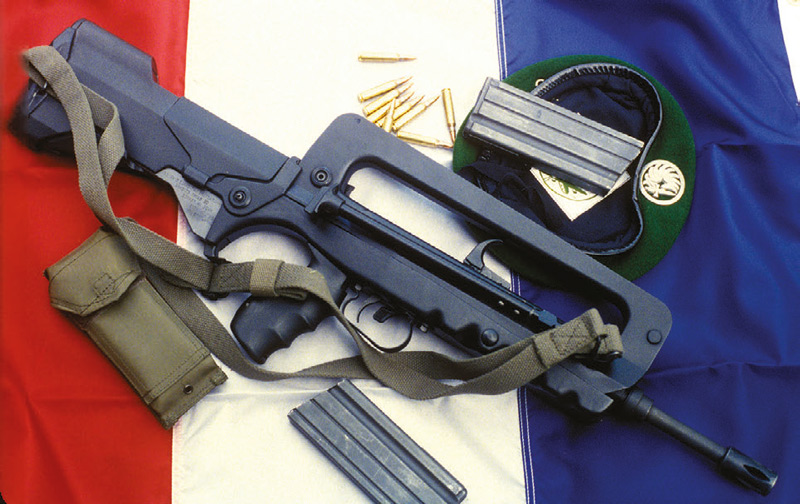
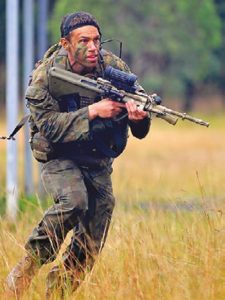
I should mention the main characteristics of the bullpup design. Most notable is placement of the action behind the trigger, thus greatly decreasing overall length of the weapon. Among other advantages cited for the bullpup are its handiness in tight spaces and the ability to bring it into action quickly.
On the negative side, trigger pull is usually not great, and it is difficult to use the bullpup well with a bayonet mounted. I have also found that carrying some bullpups in the combat ready position can be tiring. A good sling is required.
Another problem with some bullpups is the location in the stock of the ejection port, which can cause ejected casings to hit the face when shooting from the left shoulder. To counter this, some bullpups have been designed to eject forward or down or allow the ejection port to be switched to the opposite side of the stock.
I’m old enough to remember when the first bullpup was adopted for military usage: the AUG adopted by the Austrian Army in 1978. Not long after that, I was working in Austria on a security team and got a chance to examine and shoot the AUG. Although I initially found it odd looking, when I handled and shot it, I was quite impressed with it. I especially saw applications for close protection teams such as the one I was working on, since it offered a lot of firepower in a compact package.
Looking back at the AUG almost 40 years on, its innovations are impressive. At a time when most combat rifles did not have optical sights, the AUG did. Admittedly, it uses a circle reticle and only 1.5X magnification, but it was very fast for target acquisition to 100 meters and relatively accurate shooting to 300 meters.
It used sturdy polymer magazines that allowed a quick check of the number of rounds remaining. For ease of use when firing on full auto, it had a folding vertical foregrip. And with the standard 20-inch barrel, it was only a shade over 31 inches in length. On select-fire versions, pulling the trigger partway fired semi-auto and pulling all the way fired full auto. Trigger pull was not good in either mode.
I had a chance to work with British and French armed forces shortly after they’d adopted the SA80 and FAMAS in 1985 and 1981 respectively. This gave me another perspective on the bullpup design.
I found the SA80/L85 especially ungainly at first but I did get used to shooting it. It was very accurate, at least partially due to the SUSAT (Sight Unit Small Arms, Trilux), which was 4X and used a Tritium-illuminated pointer. It was quite an impressive sight in its time and is still good.
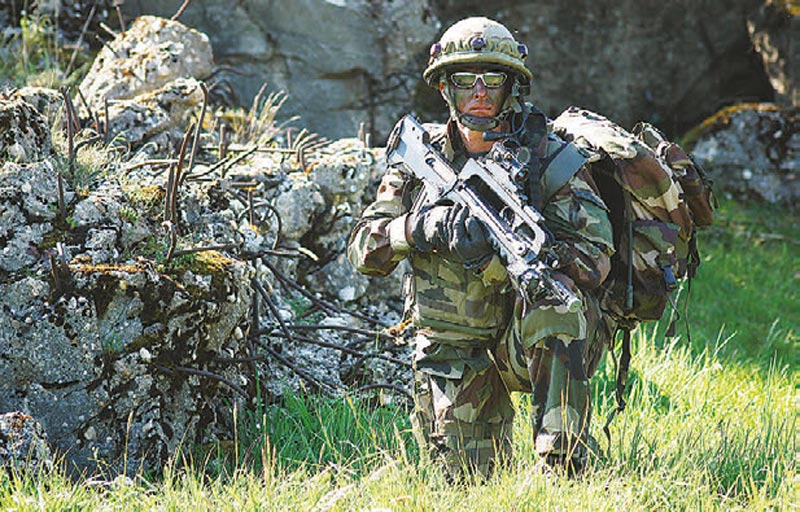
As mentioned, I found the L85 ungainly, as did some units of the British Army such as the Guards Regiments, who had to work out a new ceremonial drill for duty at Buckingham Palace and elsewhere. They did and also developed combat carry techniques with the L85 cradled in the crooks of their arms. The current L85A2 version is still in service and may be seen fitted with a vertical foregrip or other accessories.
When I tried the FAMAS (Fusil d’Assaut de la Manufacture d’Armes de Saint-Étienne), I liked its handling and lightness. But unlike the AUG and L85, it did not have an optical sight. The carry handle sight was very difficult to acquire in bright sunlight.
More recently, Aimpoint or ACOG sights have been mounted on the FAMAS, as well as pointers and illuminators. Then and now, my primary objection to the FAMAS is that the cocking handle is located beneath the carry handle, making it impossible to kick it open to eject a spent case.
Instead it is necessary to stick something sturdy in front of the cocking handle while holding one side and pushing the other hard against a solid object. I imagine French troops learn a drill for dealing with the problem, but I haven’t seen it performed. I also found that the FAMAS worked best with French ammunition and was somewhat finicky with other ammunition.
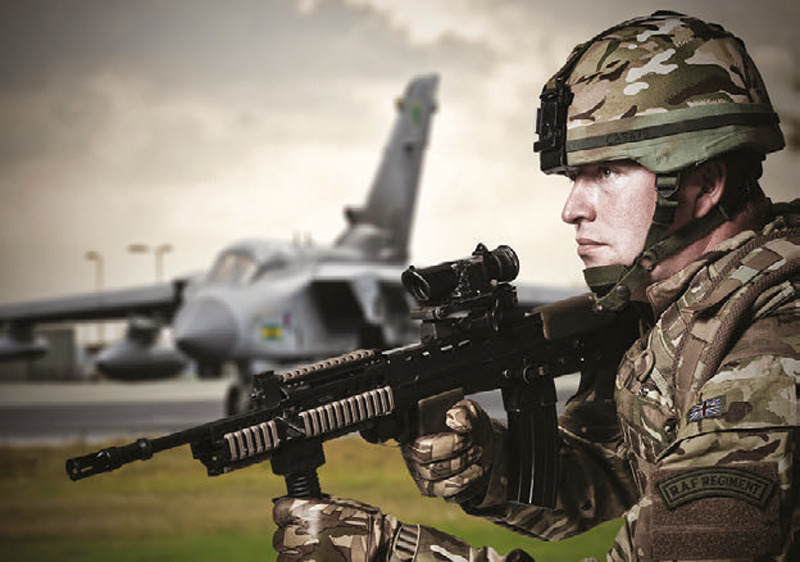
Although the designs discussed above were the ones that helped establish the viability of the bullpup design, there have been numerous other bullpups over the last two decades. Some are worthy of special note.
The FN F2000 is an excellent design that has been in use with various armed forces for about the last 15 years. It is fully ambidextrous, with well-designed controls operable with either hand even when gloved. Since it ejects forward and down, it can readily be shot off either shoulder.
Although at first it feels a bit clumsy in the hands, that opinion tends to evaporate when firing the F2000, which is very comfortable and natural. Some models are supplied with a 1.6X optical sight, while those with a Picatinny rail allow use of other optics.
One factor to keep in mind with the F2000 is that the process of clearing a loaded rifle is somewhat complicated, as just dropping the magazine and pulling back the bolt may not clear all rounds in the feed system. Sound training on the rifle is important for those who use it.
Among other bullpups in service with various armed forces are the Chinese QBZ-95 and the Israeli Tavor. Semi-auto versions of the israeli bullpup Tavor have proven popular in the United States. Another bullpup of note is the Indonesian Pindad SS3. Many others are in the development stage, including some from Russia, plus there are designs that were never adopted.
Designs of the bullpup type have been used for combat shotguns such as the UTS-15, SMGs such as the FN P90, and sniper rifles such as the Barrett M95. All illustrate the popularity of a design that performs at a high level but is extremely compact.
I have shot a substantial number of the bullpup rifles that have been produced in quantity, though not the Chinese QBZ-95. My favorite remains the Steyr AUG, the first one that I saw and shot. That’s not nostalgia. I just think it is a very well-designed rifle (though I actually like the carbine version with 16-inch barrel best), one that has stood the test of time.
Bullpups offer a lot of appeal as vehicle rifles, as they can be deployed inside the vehicle or brought into action quickly while exiting the vehicle. They also make good home defense weapons, because they can be stowed and deployed easily.
I’ll admit my first reaction to bullpup rifles was that they looked funny and would probably not be easy to shoot. But as the years have passed and I’ve put thousands of rounds through them, they don’t look funny to me anymore and, based on my experience, they certainly don’t shoot funny.
